- عنوان کتاب: Understanding Natural Language Understanding
- نویسنده: Erik Cambria
- حوزه: پردازش زبان طبیعی
- سال انتشار: 2025
- تعداد صفحه: 514
- زبان اصلی: انگلیسی
- نوع فایل: pdf
- حجم فایل: 6.12 مگابایت
حدود نیم قرن پیش، پیشگامان هوش مصنوعی (AI) مانند ماروین مینسکی پروژه بلندپروازانه تقلید از نحوه رمزگذاری و رمزگشایی ذهن انسان از معنا را آغاز کردند. در حالی که امروزه به لطف علوم اعصاب، درک بهتری از مغز داریم، هنوز تا کشف رازهای ذهن فاصله داریم. به خصوص هنگامی که صحبت از زبان، نمونه بارز هوش انسانی به میان میآید، ما در تکرار چگونگی پردازش ذهن انسان آن را با مشکلات زیادی مواجه میکنیم. «درک درک زبان طبیعی»، یعنی درک چگونگی رمزگذاری و رمزگشایی ذهن معنا از طریق زبان، نقطه عطف مهمی در سفر ما به سمت ایجاد ماشینهایی است که به طور واقعی زبان انسان را درک میکنند. مدلهای زبان بزرگ (LLM)، مانند GPT-4، ما را با توانایی خود در تولید متن منسجم و مرتبط با متن شگفتزده کردهاند، و ظاهراً شکاف بین ارتباطات انسان و ماشین را پر میکنند. با این حال، با وجود قابلیتهای چشمگیرشان، این مدلها بر اساس الگوهای آماری عمل میکنند تا درک واقعی. این کتاب درسی به بررسی تفاوت های ظریف بین این دو پارادایم می پردازد و آینده هوش مصنوعی را در حالی که ما در تلاش برای دستیابی به درک واقعی زبان طبیعی (NLU) هستیم، بررسی می کند. LLMها در شناسایی و تکثیر الگوها در مجموعه دادههای گسترده برتری دارند و پاسخهایی را تولید میکنند که هوشمندانه و معنادار به نظر میرسند. آنها می توانند متنی تولید کنند که سبک های نوشتاری انسان را تقلید کند، خلاصه ای از اسناد پیچیده را ارائه دهد، و حتی در گفتگوهای گسترده با کاربران شرکت کند. با این حال، محدودیتهای آنها زمانی آشکار میشود که با وظایفی مواجه میشوند که نیاز به درک عمیقتر، استدلال و دانش زمینهای دارند. LLM ها می توانند پاسخ هایی با صدای معقول اما نادرست تولید کنند، با پرس و جوهای مبهم دست و پنجه نرم کنند، و اغلب فاقد توانایی تعمیم دانش در حوزه های مختلف به طور موثر هستند. در عوض، یک سیستم NLU که معنی را با استفاده از زبانشناسی و نشانهشناسی (در بالای تجزیه و تحلیل آماری) واسازی میکند، سطح عمیقتری از درک زبان را نشان میدهد. این شامل درک زمینه به روشی شبیه به شناخت انسان، تشخیص معانی ظریف، مفاهیم و نکات ظریفی است که ممکن است LLM های فعلی از قلم افتاده یا به اشتباه تفسیر شوند. NLU معنایی پشت کلمات و جملات را درک می کند، مترادف ها، استعاره ها، اصطلاحات و مفاهیم انتزاعی را با دقت درک می کند. این درک عمیقتر به دقت و استحکام ثابتی اجازه میدهد و سیستمهای هوش مصنوعی را قادر میسازد تا به طور مؤثرتری به پرس و جوهای مبهم، ناقص یا جدید رسیدگی کنند. یکی از مزایای کلیدی سیستم های NLU الهام گرفته از شناخت، توانایی آنها در یادگیری و انطباق معنادار از تعاملات است. بر خلاف LLM ها که پس از آموزش ثابت می مانند، سیستم های NLU می توانند دانش جدید را به صورت پویا ترکیب کنند، سوء تفاهم ها را تصحیح کنند و با زمینه های جدید تطبیق دهند. این سازگاری در زمینه هایی که اطلاعات به سرعت در حال تکامل است، مانند فناوری و پزشکی، بسیار مهم است. علاوه بر این، سیستمهای NLU میتوانند دانش را از یک حوزه به حوزه دیگر تعمیم دهند و کاربردهای قابل اعتمادتر و همهکارهتری را در زمینههای بین رشتهای ارائه کنند. ملاحظات اخلاقی همچنین نقش مهمی در توسعه سیستمهای NLU ایفا میکنند، زیرا این سیستمها شفافتر هستند و میتوانند سوگیریها را بهتر تشخیص داده و کاهش دهند و از پاسخهای منصفانه و اخلاقی اطمینان حاصل کنند. آنها تأثیر بالقوه پاسخهای خود را درک میکنند و از محتوای مضر یا نامناسب با اطمینان بیشتری اجتناب میکنند. این درک از مفاهیم اخلاقی و هنجارهای اجتماعی برای ایجاد سیستم های هوش مصنوعی قابل اعتماد در زمینه های حساس مانند سلامت روان، آموزش و تصمیم گیری بسیار مهم است. دستیابی به NLU واقعی مستلزم بازنمایی دانش پیشرفته، مانند ترکیب استدلال نمادین و پایگاه های دانش ساختاریافته است. این شامل هستیشناسیها، شبکههای معنایی، و سیستمهای مبتنی بر قاعده است که به صراحت روابط و قوانین را کدگذاری میکنند. ترکیب هوش مصنوعی نمادین با یادگیری ماشینی، سیستمهای ترکیبی ایجاد میکند که هم دانش ساختاریافته و هم از نقاط قوت LLM در تشخیص الگو استفاده میکند. ادغام عصبی نمادین، که شبکه های عصبی را با سیستم های استدلال نمادین ادغام می کند، یک رویکرد امیدوارکننده برای درک و تولید پاسخ های دقیق تر و مناسب تر است. تعبیه دانش دنیای واقعی و استدلال کلی در سیستم های هوش مصنوعی نیز برای NLU بسیار مهم است. آموزش منابع دادههای متنوع و یکپارچهسازی مدلهای جهانی که سناریوهای دنیای واقعی را شبیهسازی میکنند، این سیستمها را قادر میسازد تا زمینه را در مکالمات طولانی حفظ کنند، مقاصد و احساسات را درک کنند و نوبتگیری را به طور موثر مدیریت کنند. علاوه بر این، سیستمهای NLU باید یادگیری و سازگاری انسانمانند را تقلید کنند و پیوسته از تعامل، بازخورد و اصلاح انسان یاد بگیرند. در این کتاب درسی، وضعیت فعلی LLMها، قابلیتها و محدودیتهای آنها را بررسی میکنیم و آنها را با اهداف آرمانی NLU مقایسه میکنیم. ما به مبانی فنی مورد نیاز برای دستیابی به NLU واقعی، از جمله نمایش دانش پیشرفته، سیستمهای هوش مصنوعی ترکیبی و ادغام نوروسامبولیک، کاوش میکنیم. ما همچنین برخی پیامدهای اخلاقی و تأثیرات اجتماعی توسعه سیستم هوش مصنوعی را بررسی میکنیم…
About half a century ago, artificial intelligence (AI) pioneers like Marvin Minsky embarked on the ambitious project of emulating how the human mind encodes and decodes meaning. While today we have a better understanding of the brain thanks to neuroscience, we are still far from unlocking the secrets of the mind. Especially when it comes to language, the prime example of human intelligence, we face enormous difficulties in replicating how the human mind processes it. “Understanding natural language understanding”, i.e., understanding how the mind encodes and decodes meaning through language, is a significant milestone in our journey towards creating machines that genuinely comprehend human language. Large language models (LLMs), such as GPT-4, have astounded us with their ability to generate coherent, contextually relevant text, seemingly bridging the gap between human and machine communication. Yet, despite their impressive capabil- ities, these models operate on statistical patterns rather than true comprehension. This textbook delves into the nuanced differences between these two paradigms and explores the future of AI as we strive to achieve true natural language understand- ing (NLU). LLMs excel at identifying and replicating patterns within vast datasets, producing responses that appear intelligent and meaningful. They can generate text that mimics human writing styles, provide summaries of complex documents, and even engage in extended dialogues with users. However, their limitations become evident when they encounter tasks that require deeper understanding, reasoning, and contextual knowledge. LLMs can produce plausible-sounding but incorrect answers, struggle with ambiguous queries, and often lack the ability to generalize knowledge across different domains effectively. Instead, an NLU system that deconstructs meaning leveraging linguistics and semiotics (on top of statistical analysis) represents a more profound level of language comprehension. It involves understanding context in a manner similar to human cognition, discerning subtle meanings, implications, and nuances that current LLMs might miss or misinterpret. NLU grasps the semantics behind words and sentences, comprehending synonyms, metaphors, idioms, and abstract concepts with precision. This deeper comprehension allows for consistent accuracy and robustness, enabling AI systems to handle ambiguous, incomplete, or novel queries more effectively. One of the key advantages of cognitive-inspired NLU systems is their ability to learn and adapt from interactions meaningfully. Unlike LLMs, which remain static once trained, NLU systems can incorporate new knowledge dynamically, correcting misunderstandings and adapting to new contexts. This adaptability is crucial in fields where information is rapidly evolving, such as technology and medicine. Moreover, NLU systems can generalize knowledge from one domain to another, providing more reliable and versatile applications across interdisciplinary fields. Ethical considerations also play a significant role in the development ofNLUsystems, as these are more transparent and can better recognize and mitigate biases, ensuring fair and ethical responses. They understand the potential impact of their responses, avoiding harmful or inappropriate content more reliably. This understanding of ethical implications and societal norms is crucial for building trustworthy AI systems in sensitive areas like mental health, education, and decision-making. Achieving true NLU involves advanced knowledge representation, such as incor- porating symbolic reasoning and structured knowledge bases. This includes ontolo- gies, semantic networks, and rule-based systems that explicitly encode relationships and rules. Combining symbolic AI with machine learning creates hybrid systems that leverage both structured knowledge and the pattern recognition strengths of LLMs. Neurosymbolic integration, which merges neural networks with symbolic reasoning systems, is a promising approach to understanding and generating more accurate and contextually appropriate responses. Embedding real-world knowledge and com- monsense reasoning into AI systems is also crucial for NLU. Training on diverse data sources and integrating world models that simulate real-world scenarios enable these systems to maintain context over long conversations, understand intents and sentiments, and manage turn-taking effectively. Furthermore, NLU systems should emulate human-like learning and adaptation, continuously learning from human interaction, feedback, and correction. In this textbook, we explore the current state of LLMs, their capabilities, and limitations, and contrast them with the aspirational goals of NLU. We delve into the technical foundations required for achieving true NLU, including advanced knowl- edge representation, hybrid AI systems, and neurosymbolic integration. We also examine some ethical implications and societal impacts of developing AI systems that genuinely understand human language. The textbook features multiple exercises at the end of each chapter, along with a group assignment and a final quiz. It evolved out of the author’s own teaching course SC4021 (NTU CCDS course on information retrieval) but it can be used for many other courses, e.g., natural language processing (NLP), AI, data analytics, data mining, etc., at NTU and universities worldwide. We will explore different ways of encoding and decoding meaning, which can be used for knowledge representation and reasoning in several downstream applications. As we embark on this exploration, we are reminded of the pioneering work of visionaries like Marvin Minsky, whose relentless pursuit of understanding and belief in the potential of the human mind have inspired us to dream of a future where machines not only mimic human language but truly comprehend it. This textbook is dedicated to those who continue to push the boundaries of AI, striving to create systems that enrich our lives with genuine understanding and insight.
این کتاب را میتوانید از لینک زیر بصورت رایگان دانلود کنید:




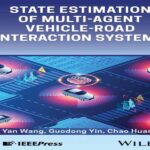
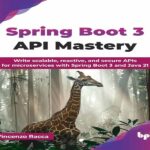



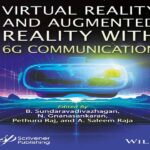
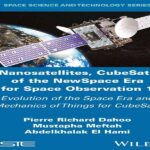


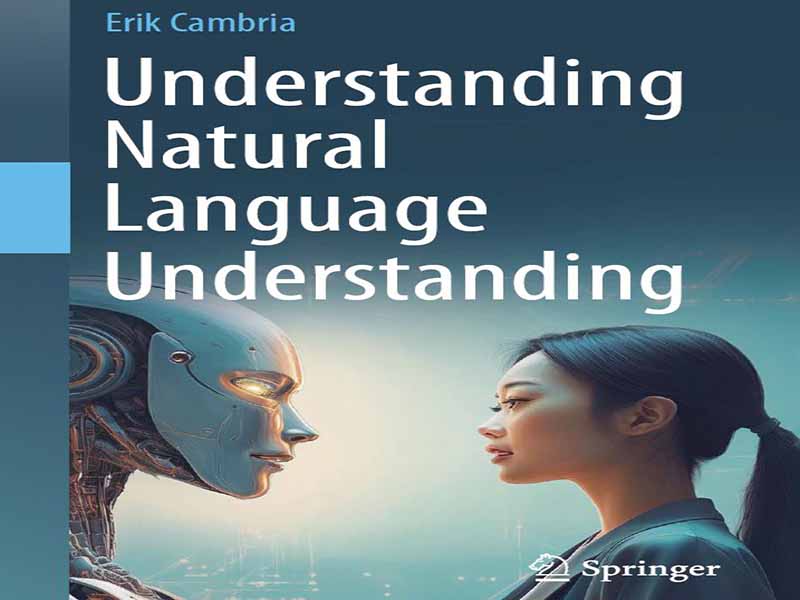


















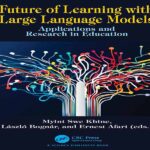
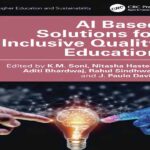
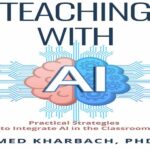

نظرات کاربران